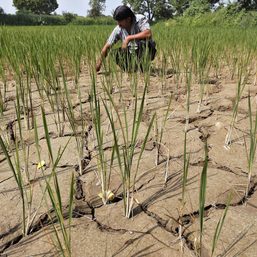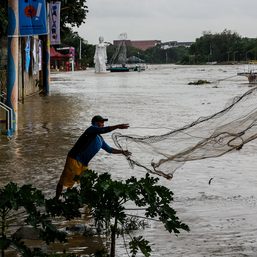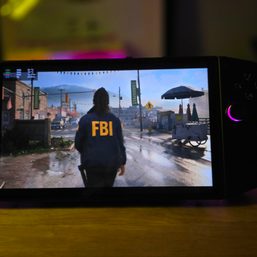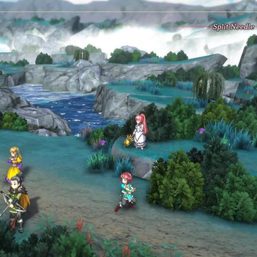SUMMARY
This is AI generated summarization, which may have errors. For context, always refer to the full article.

Everyone has a role to play in solving the climate crisis. This includes those who enjoy role-playing video games and more.
Formal discourse on the climate crisis has been traditionally held in conferences and governance spaces. While the rise of digital and artistic platforms has allowed for more creative communications, many sectors remain outside the reach of these dialogues.
Over 2.3 billion people play video games globally. The influence of this activity on our lives has gone beyond pure entertainment, with other functions from communicating themes to developing analytical skills becoming more emphasized in recent games. It also presents a great opportunity for education on climate change and sustainable development.
The growing popularity of video games has also led to shattering traditional perceptions related to age and gender. Only 22% of all gamers worldwide are aged below 21 years old, while nearly half of the players are female. Women and the youth are among the most vulnerable sectors to climate change impacts, which justifies the need to connect to them climate-related issues and solutions through platforms within their interest.
Sustainability in gaming
Among the 17 Sustainable Development Goals (SDGs), video games represent goals 3 (good health and well-being), 4 (quality education), 13 (climate action), and 15 (life on land) the most often. This shows the industry’s enormous potential for further popularizing the sustainability agenda through raising awareness for related causes, enhancing learning opportunities, and influencing positive behavioral changes, among others.
Many popular video games have prominently included themes related to the SDGs. Last October, the developers of Minecraft, the best-selling video game of all time, created a set of immersive worlds for students to explore the climate crisis. Called “Climate Futures,” the lessons involve virtual farms and forests for education on how it affects ecosystems, economies, and communities.
Pokemon, a popular gaming franchise with environmental undertones, has further enhanced its efforts to communicate climate and environmental issues. In 2019, it introduced a character, the Pokemon Corsola, that references coral bleaching.
Except for 2020, the Pokemon franchise has also conducted sustainability-related campaigns during the week of Earth Day for the past four years through the mobile game Pokemon Go. Players are encouraged to participate in garbage clean-up drives, commuting, and volunteering to receive in-game rewards, with donations made to nonprofit environmental initiatives.
While video games have started making a significant impact on climate and environmental action, their full potential has yet to be realized. Their interactive, immersive nature allows for a wider range of engagements compared to other forms of media. But with the growing urgency for scaling up global action, the video gaming industry must also speed up turning potential into positive real-world impact.
Building a green alliance
In September 2019, video game companies launched the Playing for the Planet Alliance at the UN Climate Summit. The alliance currently consists of 40 video game companies with a reach of more than 1 billion gamers.
Members of the alliance pledged to sustainability-related targets and timelines integrating environmental themes in their games and greening their operations. This includes reducing carbon footprints, offsetting their greenhouse gas (GHG) emissions, and adopting circular economy practices in their business models.
For instance, Sony Interactive Entertainment, under the world’s biggest video game company, pledged to enhance the energy efficiency of its PlayStation consoles; this could help avoid 30 million tons of pollution by 2030. Bandai Namco, the developers of Pac-Man, committed to a 35% reduction in its GHG emissions by 2030 and to go net-zero by 2050.
Prior to COP26, Playing for the Planet held its annual Green Game Jam. Leaders from the console, mobile, and PC gaming sectors educated and empowered players for climate and environmental action. This year’s event involved gaming studios adding maps, storylines, and messaging into their games to highlight the themes of forest and marine conservation.
Communities of gamers also engaged in two pledge campaigns to raise support for forest and marine conservation around the world, to be presented to world leaders in future climate conferences. As of this writing, these petitions have more than 62,000 signatures.
These interventions are crucial not only to educate the public about climate and environmental issues but also to ensure the industry’s sustainability amid recent trends. The shift from physically packaged games to digital downloading would result in changes to accounting for GHG emissions.
Companies also need to address the rapid increase in electronic waste, such as mobile phones and computers, considering only 20% of it is recycled. The rise of virtual and augmented reality also opens more opportunities for creative and effective communication.
As world leaders struggle to reach agreements on the climate crisis at COP26 and beyond, new ways must be explored to scale up action. They must not overlook the potential of the video gaming world. – Rappler.com
John Leo is a Climate Tracker COP26 virtual fellow. He is the deputy executive director for programs and campaigns of Living Laudato Si’ Philippines and is a civil society representative at the Glasgow climate summit.
Add a comment
How does this make you feel?
![[OPINION] In a changing climate, how do we ensure safety and health at work?](https://www.rappler.com/tachyon/2024/04/Climate-change-safety-workers-April-25-2024.jpg?resize=257%2C257&crop_strategy=attention)








![[GAME DIARY] ‘FFVII Rebirth’ entry No. 1: Did anyone else get demolished by Midgardsormr?](https://www.rappler.com/tachyon/2024/03/ffvii-midgardsormr.jpg?resize=257%2C257&crop=414px%2C0px%2C1011px%2C1011px)









There are no comments yet. Add your comment to start the conversation.